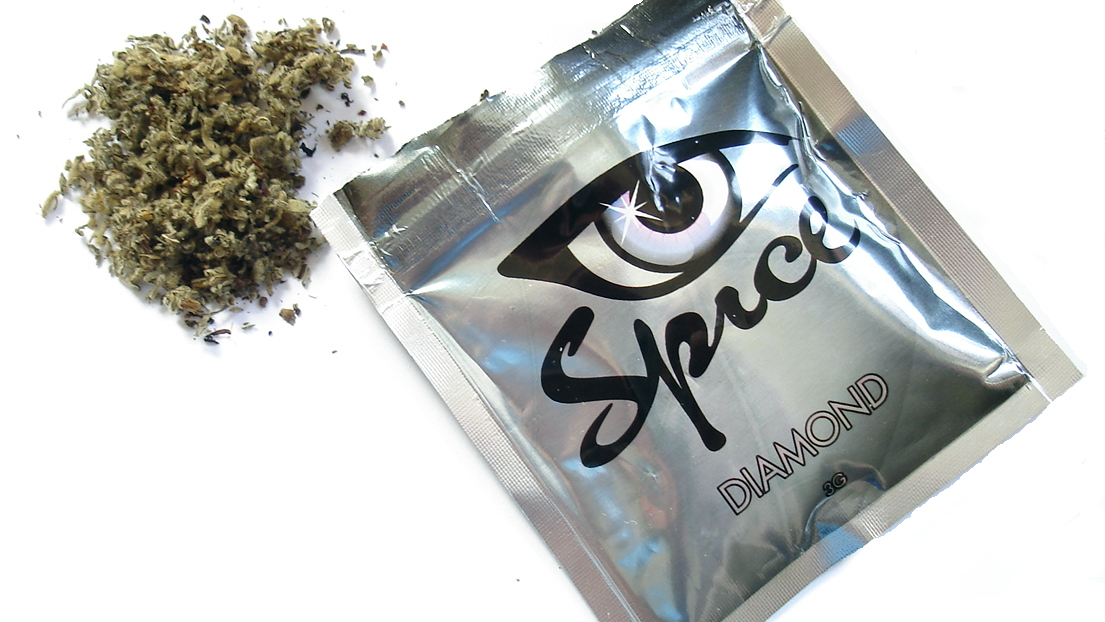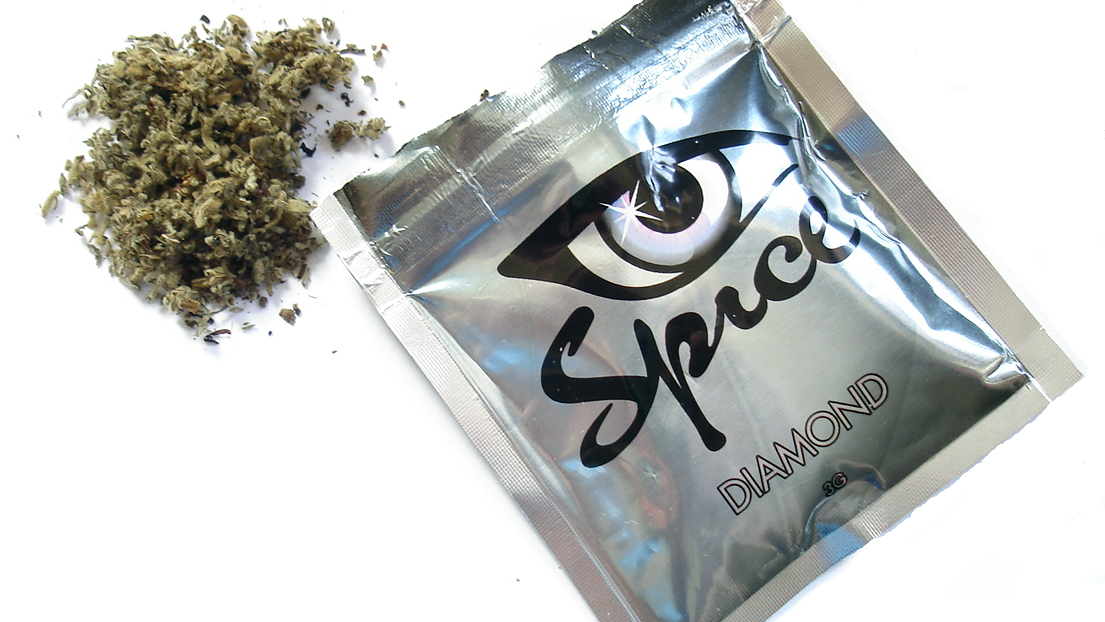
A synthetic cannabinoid commonly used in a marijuana alternative product had unpredictable effects and could induce “life-threatening conditions” including seizures and convulsions, a Dutch study suggested.
The study, published in the March 2019 issue of Cannabis and Cannabinoid Research by Mary Ann Liebert Inc., was conducted by researchers at Maastricht University in the Netherlands. It’s the first controlled study observing the effects of synthetic cannabinoids in humans.
Focusing on recreational synthetic cannabinoids and not any possible medical applications, the researchers found that JWH-018, the active ingredient of the marijuana alternative known as spice, proved to be far more harmful than natural cannabinoids.
10 milligram bag of pure JWH-018, next to penny for scale. (Mikeaz/Wikimedia Commons)
In the study, 17 people each smoked a 2-milligram to 6.2-milligram dose of the synthetic cannabinoid and were monitored over a 12-hour period.
Researchers measured a number of factors, including vital signs, cognitive performance, and subjective experience. The subjective experience varied widely and was hard to predict from person to person, but those who experienced intoxication had experienced an increased heart rate during the first hour after smoking, as well as poor performance on motor skills and cognitive tests.
The participants also showed increased levels of confusion, impaired cognitive tracking, memory loss, detachment, and a loss of a sense of identity and reality.
Alarming Conclusion on Synthetic Cannabinoids
Researchers concluded that there were two reasons the synthetic cannabinoid showed an increased risk of overdose in users.
First, synthetic cannabinoids act on the same central cannabinoid receptors in the brain as THC in natural cannabis, but have a greater ability to bind with these receptors and are far more likely to spark a physiological reaction — or stronger reaction — when the two meet.
Second, the inability to control the concentration and potency of the drug when smoked created a greater chance of overdose.
Daniele Piomelli, director of the University of California, Irvine Center for the Study of Cannabis, believes that this synthetic cannabinoid has been entirely misused since the early stages of its development in the 1970s, which explains the dangers found by the Dutch researchers.
“They were originally designed for research in laboratory animals, not humans,” Piomelli said to Weedmaps News. “They were trying to improve on THC, mostly looking for better painkillers, but had to give up because of side effects.”
Another common overdose factor, Piomelli explained, stems from the other ingredients mixed with spice. A variety of chemicals, including rat poison, has been found in certain synthetic cannabinoids sold as marijuana alternatives.
Piomelli remains hopeful that the dangerous and destructive effects of the recreational use of alternative marijuana products won’t hinder future efforts to develop synthetic cannabinoids that might be safe and effective for medical use.
“The Dutch study will help frame the real effects of synthetic cannabinoids, when these are made under controlled conditions and in certified labs,” Piomelli said. “Some companies have tried to develop synthetic cannabinoids that do not enter the brain, but with mixed success. There is still interest, however, and hope.”
In order to “provide a full-scale risk assessment of this synthetic cannabinoid,” the study concluded that more research is required into novel psychoactive substances (NPS) like synthetic cannabinoids.











